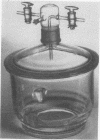Abstract
Study of the effect of atmospheric relative humity (RH) on the adsorption of paraformaldehyde-generated formaldehyde gas on various surfaces and the effect of the adsorbed formaldehyde on the death rate of bacterial spores showed that increasing the RH caused a corresponding increase of formaldehyde levels on all surfaces. The amount peaked at 83% RH. The levels obtained at 100% RH were slightly below those at 83% RH. Cotton cloth had a much greater affinity for the gas at all RH than either glass or stainless steel. The death rate of bacterial spores on surfaces containing adsorbed formaldehyde was high for the first hour after removal from the formaldehyde atmosphere but decreased rapidly thereafter. This held true for both cotton and glass surfaces. Also, formaldehyde levels of 15 to 27 μg/ml of nutrient broth caused inhibition of bacterial growth, but levels above 27 μg/ml rendered broth sterile.
Full text
PDF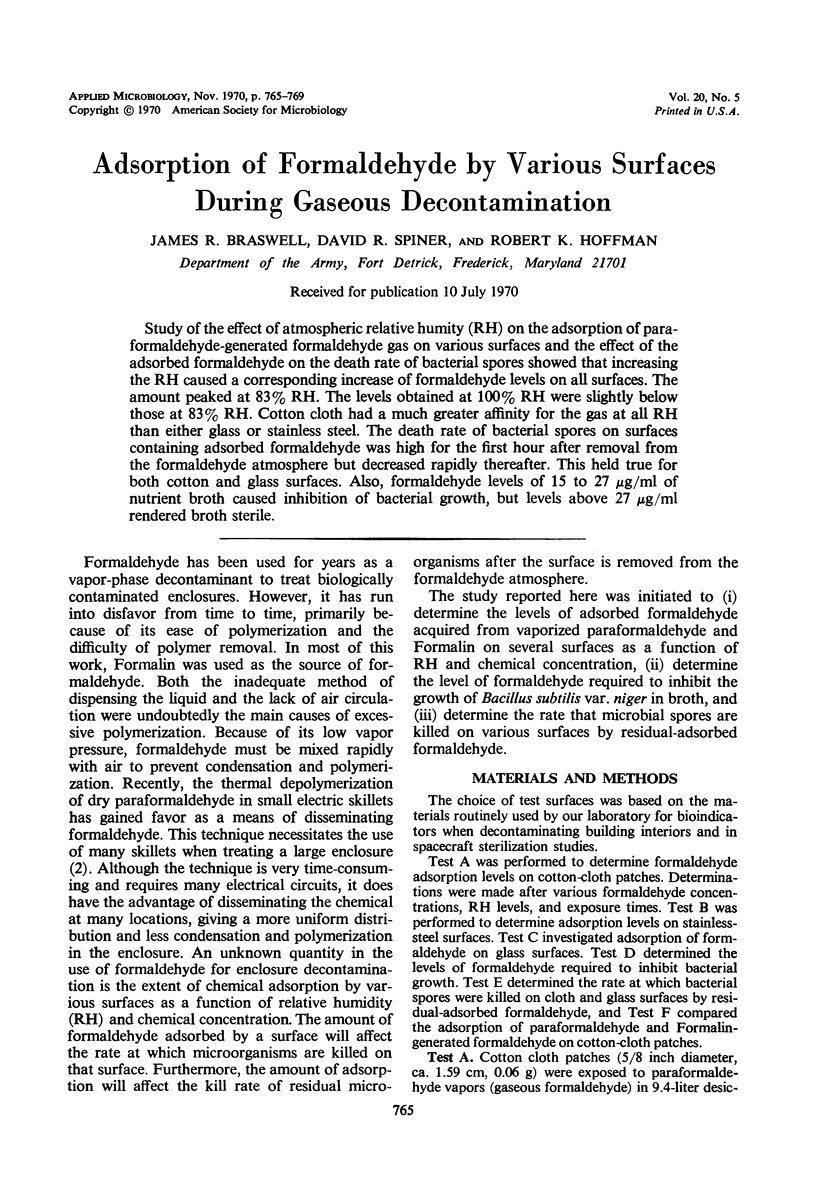
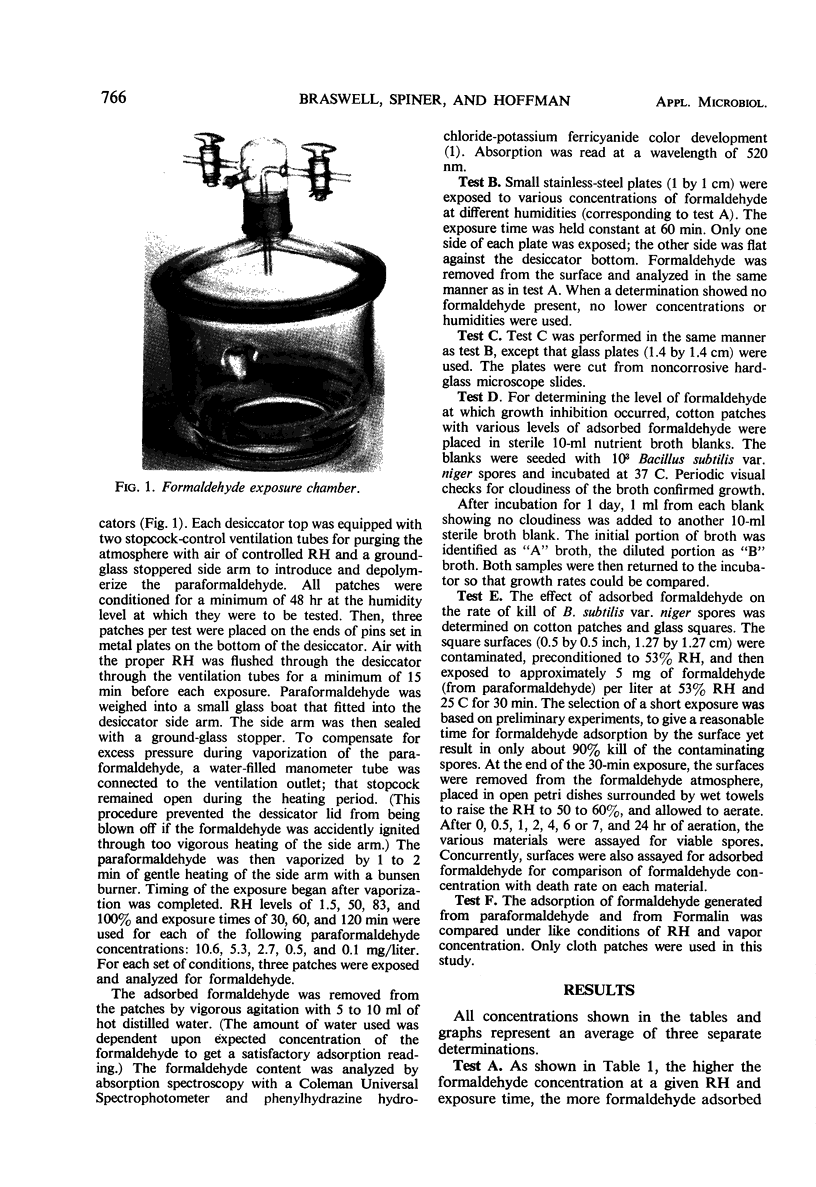
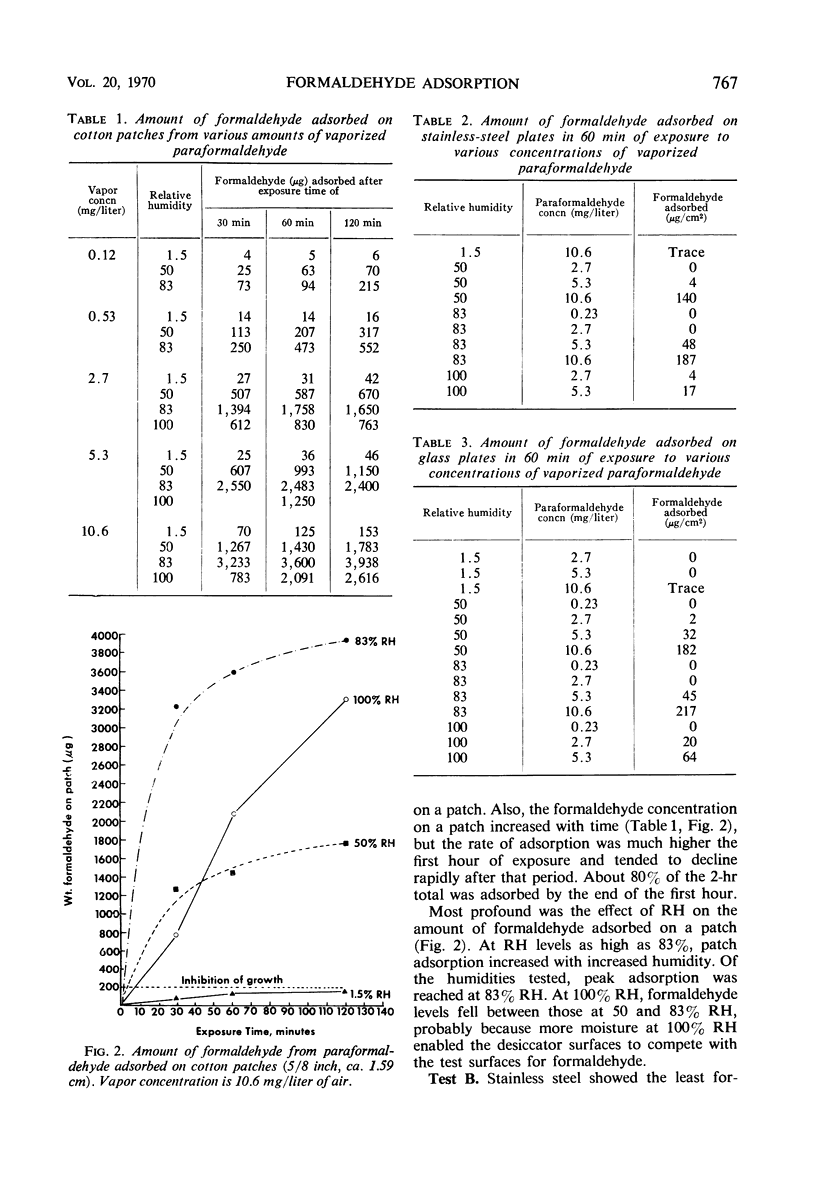
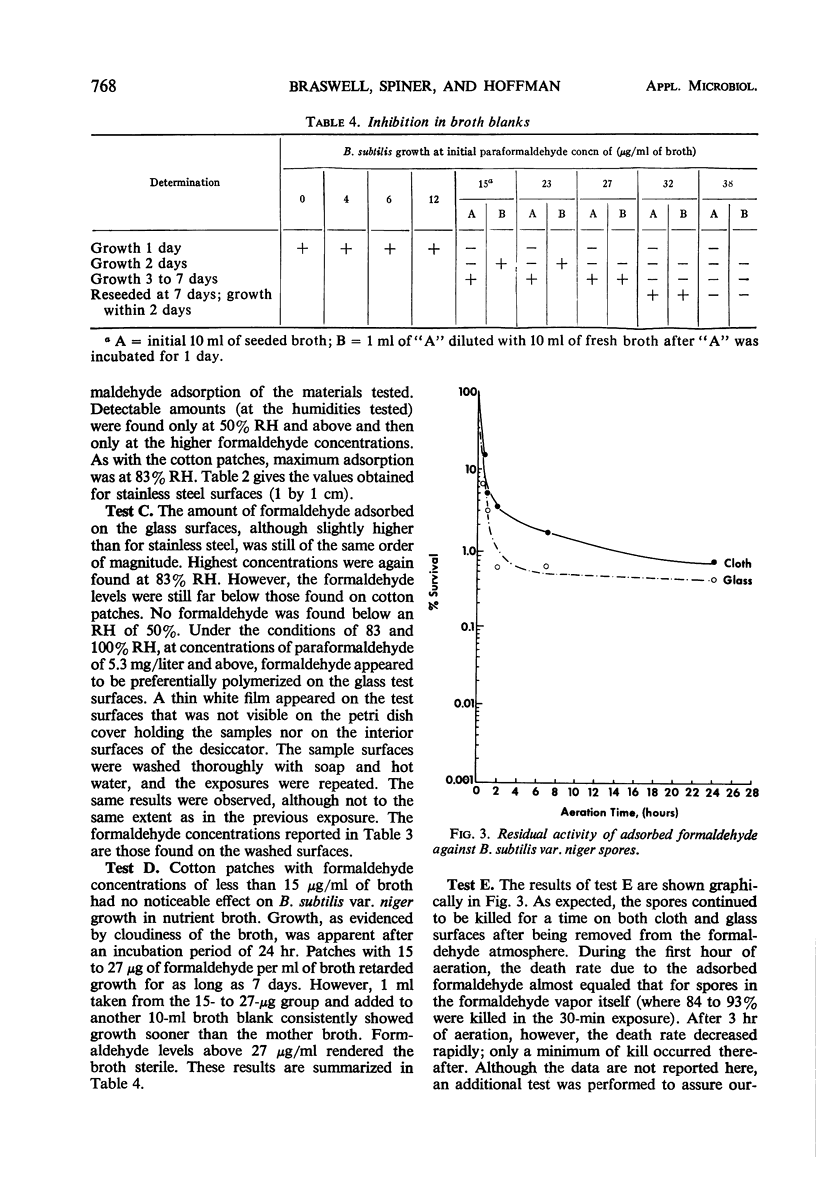
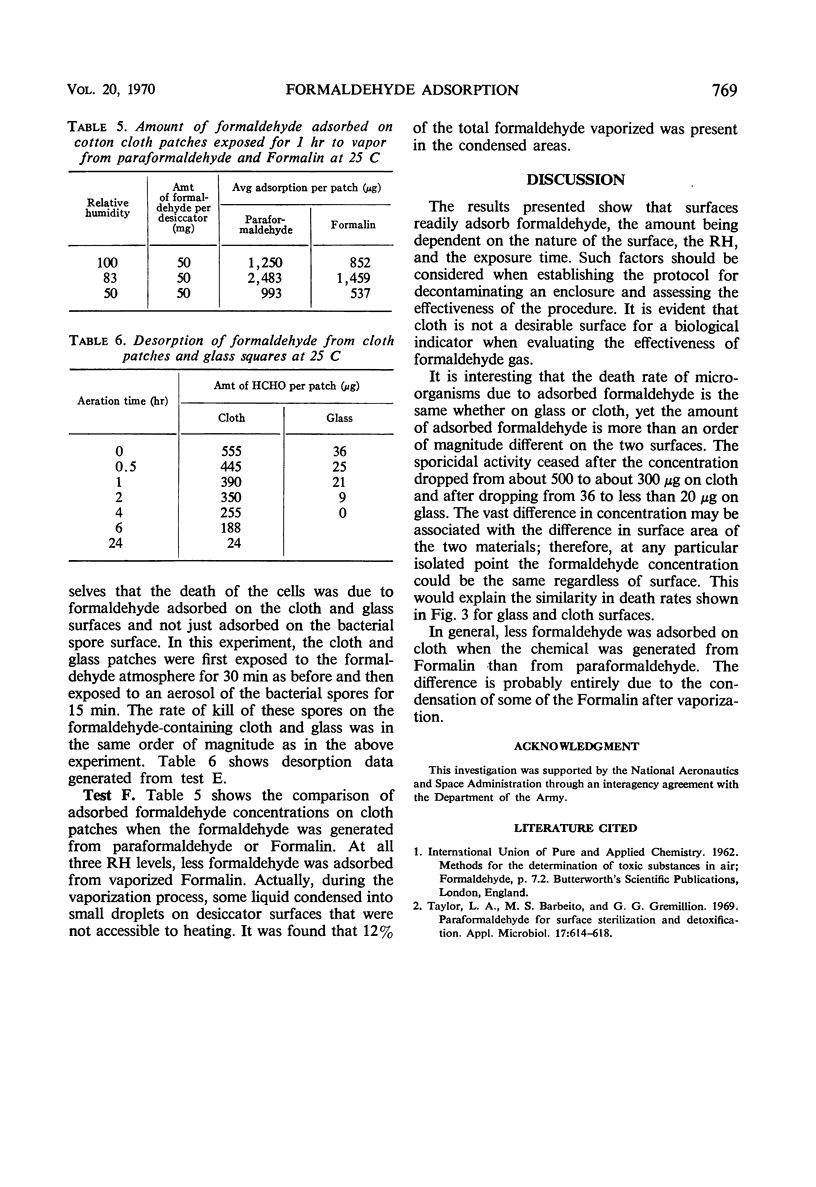
Images in this article
Selected References
These references are in PubMed. This may not be the complete list of references from this article.
- Taylor L. A., Barbeito M. S., Gremillion G. G. Paraformaldehyde for surface sterilization and detoxification. Appl Microbiol. 1969 Apr;17(4):614–618. doi: 10.1128/am.17.4.614-618.1969. [DOI] [PMC free article] [PubMed] [Google Scholar]



